- Clone
- 2E2 (See other available formats)
- Regulatory Status
- RUO
- Other Names
- IFN-γRα , IFN-γ Receptor α chain, CDw119
- Isotype
- Armenian Hamster IgG
- Ave. Rating
- Submit a Review
- Product Citations
- publications
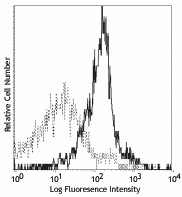
-

C57BL/6 splenocytes stained with purified 2E2, then detected with biotinylated anti-Armenian hamster IgG followed by Sav-PE
| Cat # | Size | Price | Quantity Check Availability | Save | ||
|---|---|---|---|---|---|---|
| 112803 | 50 µg | 67€ | ||||
| 112804 | 500 µg | 235€ | ||||
CDw119 is a 90 kD immunoglobulin superfamily member, also known as IFN-γRα chain. It is a class II cytokine receptor family member that serves as a IFN-γ-binding chain associated with the IFN-γ β chain also known as AF-1. In addition to ligand binding, CDw119 participates in ligand trafficking. CDw119 is expressed on T and B cells, NK cells, fibroblasts, endothelial, and epithelial cells. Binding of IFN-γ induces receptor dimerization, internalization, Jak1 and Jak2 protein kinase activation and, ultimately, STAT1 activation. IFN-γ initiates and regulates a variety of immune responses.
Product DetailsProduct Details
- Verified Reactivity
- Mouse
- Antibody Type
- Monoclonal
- Host Species
- Armenian Hamster
- Immunogen
- Soluble recombinant mouse IFN-γR α chain protein
- Formulation
- Phosphate-buffered solution, pH 7.2, containing 0.09% sodium azide.
- Preparation
- The antibody was purified by affinity chromatography, and conjugated with biotin under optimal conditions.
- Concentration
- 0.5 mg/ml
- Storage & Handling
- The antibody solution should be stored undiluted between 2°C and 8°C. Do not freeze.
- Application
-
FC - Quality tested
- Recommended Usage
-
Each lot of this antibody is quality control tested by immunofluorescent staining with flow cytometric analysis. For flow cytometric staining, the suggested use of this reagent is ≤ 0.25 µg per 106 cells in 100 µl volume. It is recommended that the reagent be titrated for optimal performance for each application.
- Application Notes
-
Additional reported applications (for the relevant formats) include: Western blotting and immunoprecipitation1. The 2E2 antibody does not block the binding of IFN-γ to IFN-γ receptor. For the most successful immunofluorescent staining results, it may be necessary to maximize signal over background by using a relatively bright fluorochrome-antibody conjugate or by using a high sensitivity, three-layer staining technique (e.g., including a biotinylated antibody (Cat. No. 112804) or biotinylated anti-Armenian hamster IgG (Cat. No. 405501) second step, followed by SAv-PE (Cat. No. 405204)).
-
Application References
(PubMed link indicates BioLegend citation) -
- Bach EA, et al. 1995. Science 270:1215.
- Product Citations
-
- RRID
-
AB_2123476 (BioLegend Cat. No. 112803)
AB_2123475 (BioLegend Cat. No. 112804)
Antigen Details
- Structure
- Ig superfamily, class II cytokine receptor family, associates with IFN-γ AF-1, 90 kD
- Distribution
-
T cells and B cells, NK cells, myeloid cells, fibroblasts, endothelial and epithelial cells
- Function
- Initiates and regulates immune response
- Ligand/Receptor
- IFN-γ
- Cell Type
- B cells, Endothelial cells, Epithelial cells, Fibroblasts, NK cells, T cells
- Biology Area
- Immunology
- Molecular Family
- CD Molecules, Cytokine/Chemokine Receptors
- Antigen References
-
1. Basu M, et al. 1988. P. Natl. Acad. Sci. USA 85:6282.
2. Codias EK, et al. 1990. J. Immunol. 144:2197. - Gene ID
- 15979 View all products for this Gene ID
- UniProt
- View information about CD119 on UniProt.org
Related FAQs
- How many biotin molecules are per antibody structure?
- We don't routinely measure the number of biotins with our antibody products but the number of biotin molecules range from 3-6 molecules per antibody.
Other Formats
View All CD119 Reagents Request Custom Conjugation| Description | Clone | Applications |
|---|---|---|
| Biotin anti-mouse CD119 (IFN-γ R α chain) | 2E2 | FC |
| Purified anti-mouse CD119 (IFN-γ R α chain) | 2E2 | FC,IP,WB |
| TotalSeq™-C1257 anti-mouse CD119 (IFN-γ R α chain) | 2E2 | PG |
Customers Also Purchased
Compare Data Across All Formats
This data display is provided for general comparisons between formats.
Your actual data may vary due to variations in samples, target cells, instruments and their settings, staining conditions, and other factors.
If you need assistance with selecting the best format contact our expert technical support team.
-
Biotin anti-mouse CD119 (IFN-γ R α chain)
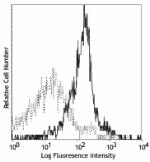
C57BL/6 splenocytes stained with purified 2E2, then detected... -
Purified anti-mouse CD119 (IFN-γ R α chain)

C57BL/6 splenocytes stained with purified 2E2, then detected... -
TotalSeq™-C1257 anti-mouse CD119 (IFN-γ R α chain)
 Login / Register
Login / Register 







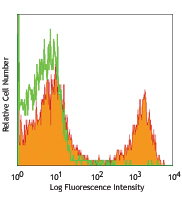
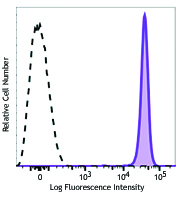

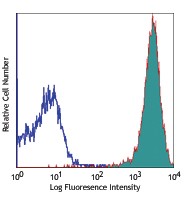



Follow Us